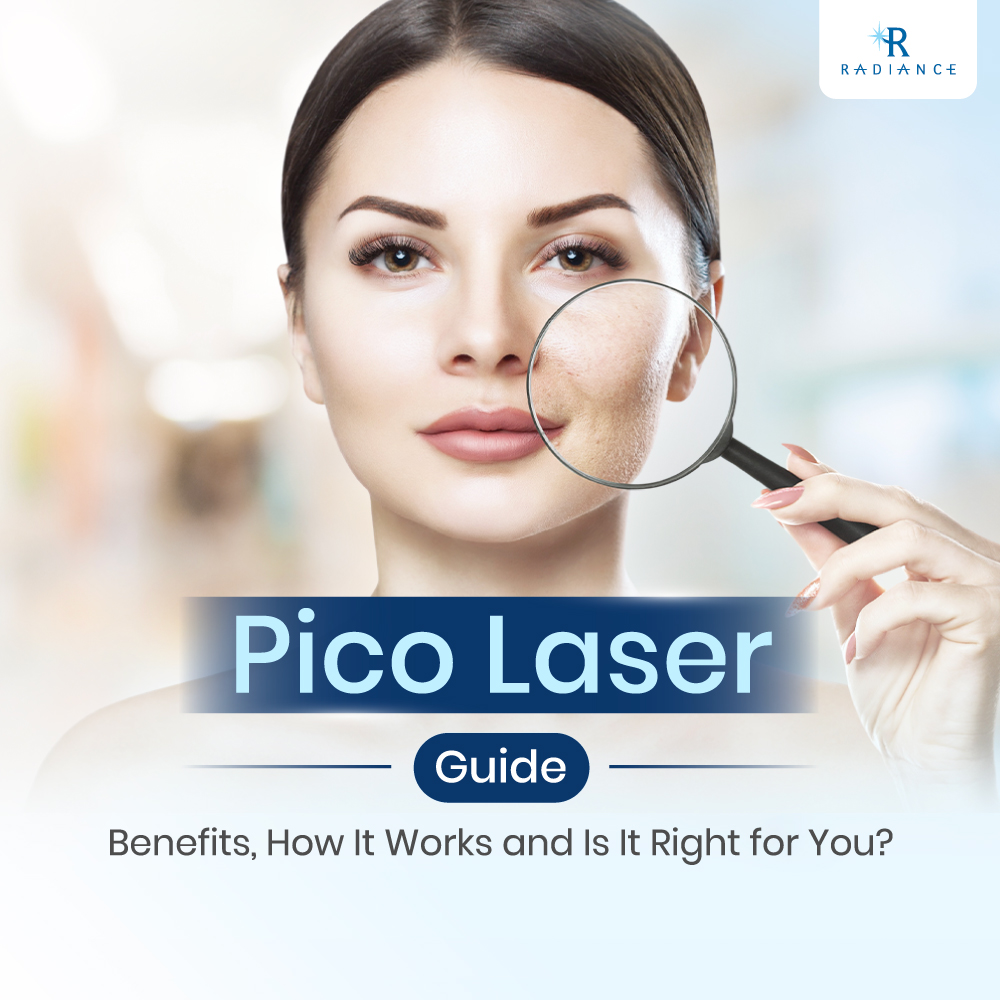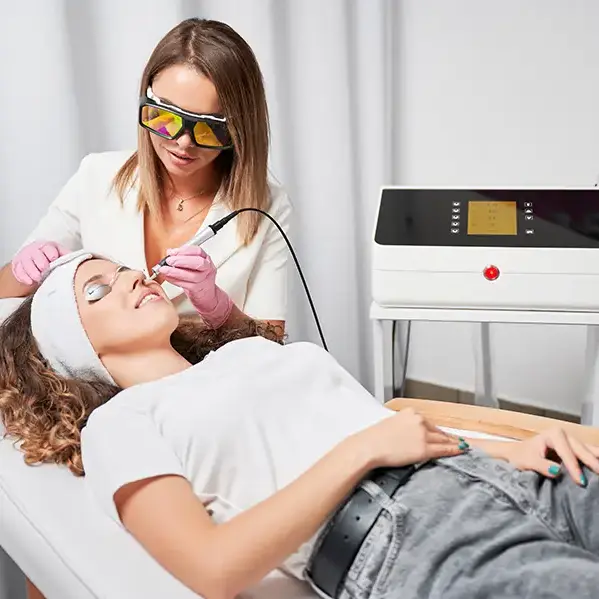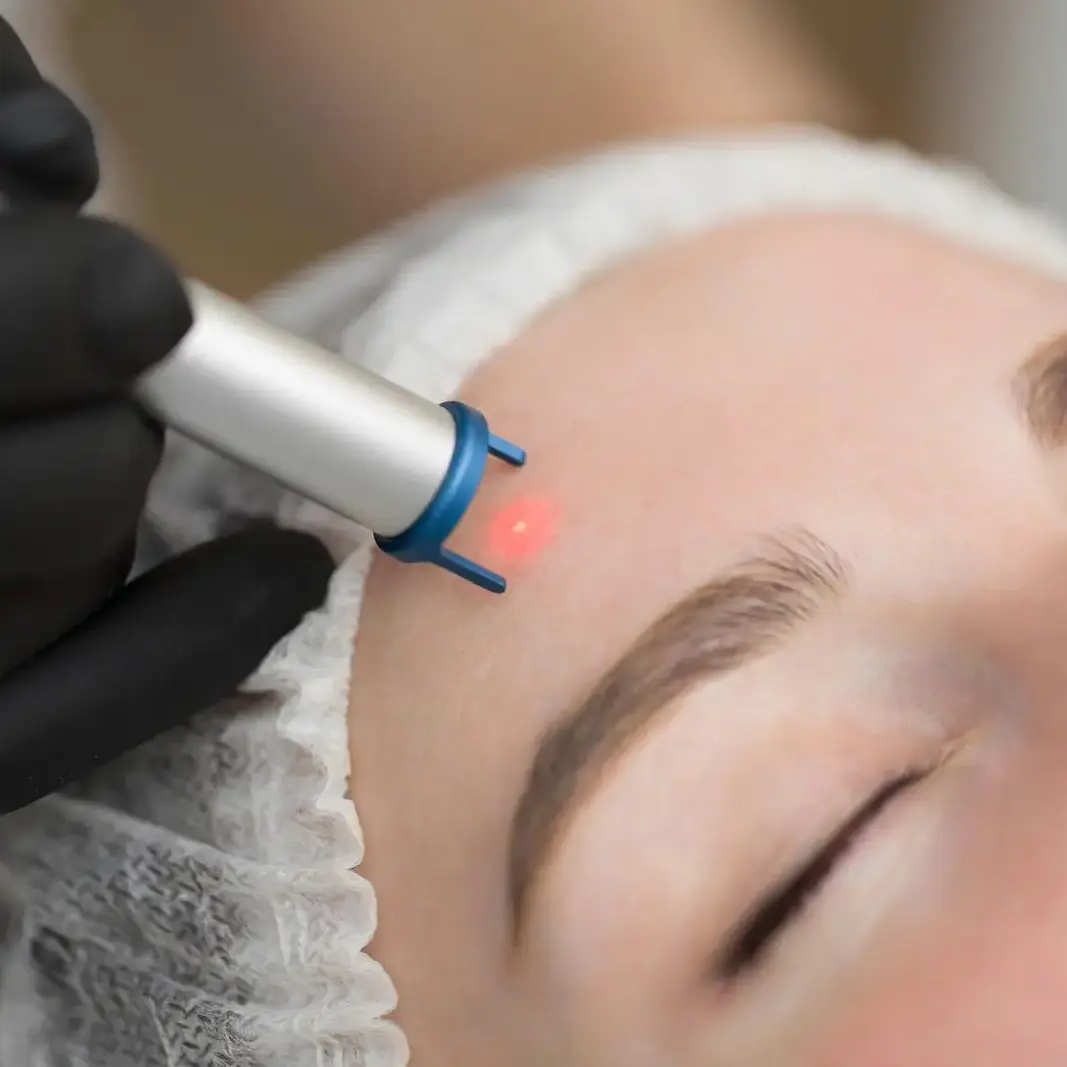We believe that all of you have experienced the acne scars, don’t you?
Table of Contents
ToggleAcne scars can serve as lasting reminders of past battles with acne, impacting not only our physical appearance but also our self-confidence. Fortunately, advancements in dermatological technology have led to the development of effective treatments for acne scars.
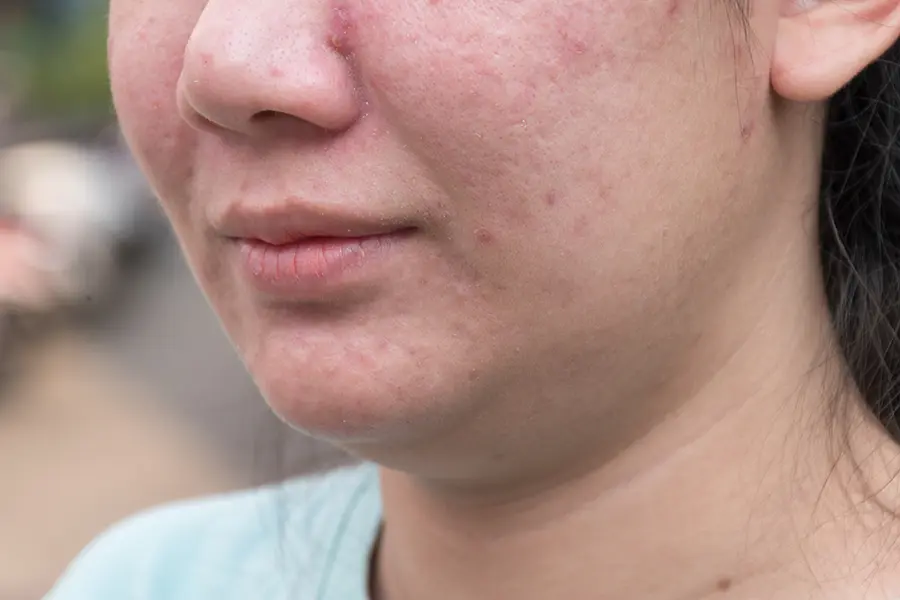
What are acne scars?
Acne scars form when the skin’s healing process is disrupted following an acne breakout. The type of acne scar that develops depends on the severity of the inflammation and the depth of the acne lesion, including atrophic scars and hypertrophic scars (Healthline Media, 2023):
- Atrophic Scars (depressed acne scars): These appear as indented or sunken areas below the skin’s surface and are caused by the loss of collagen and elastin, the structural proteins that support the skin.
- Hypertrophic and Keloid Scars (raised acne scars): These scars are raised and thickened, often appearing as red or pink bumps on the skin’s surface. They result from excessive collagen production that extends beyond the original wound site during the healing process.
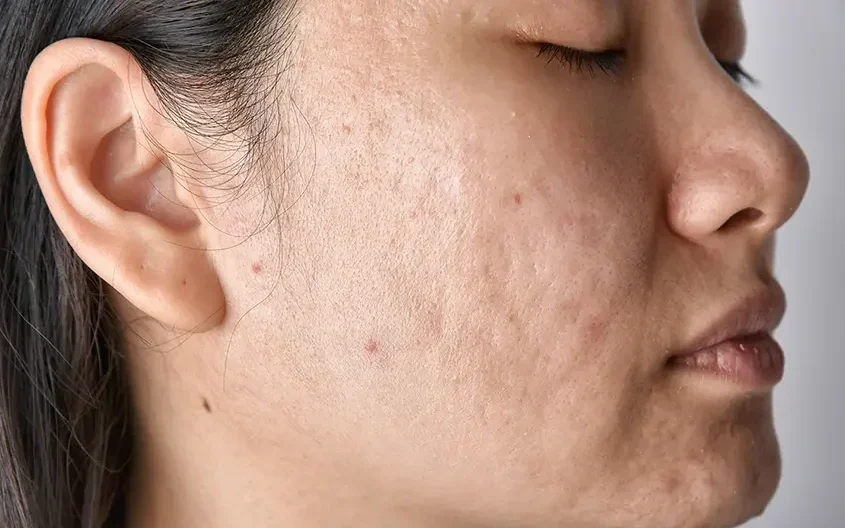
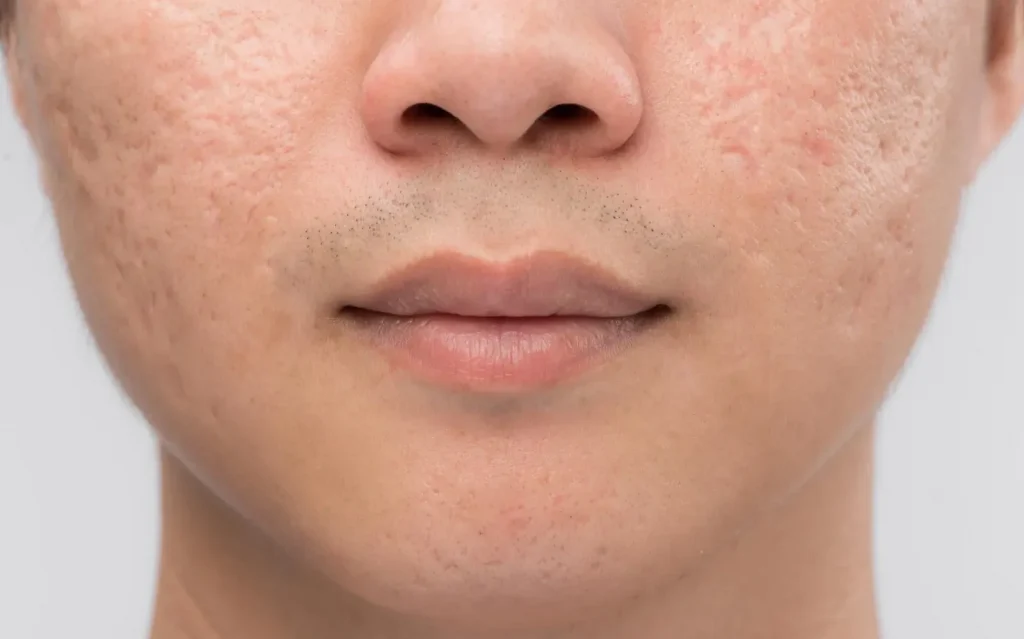
How to choose the right treatment?
You may wonder what to choose. The choice of treatment depends on the type and severity of the scars. According to Cleveland Clinic Staff (2023) and the American Academy of Dermatology (2023), here are some common treatment options:
Read more > Acne & Acne Scars
Topical Treatments:
Applied directly to the skin, these can help reduce inflammation and promote healing. They may contain ingredients such as erythromycin, clindamycin, sulfacetamide, retinoic acid, or vitamin C. Key benefits include:
- Improved Texture: Ingredients like retinoids promote skin cell turnover, leading to smoother and reduce the appearance of uneven surfaces caused by acne scarring.
- Reduced Hyperpigmentation: Components like vitamin C target hyperpigmentation, fading dark spots and discoloration associated with acne scars.
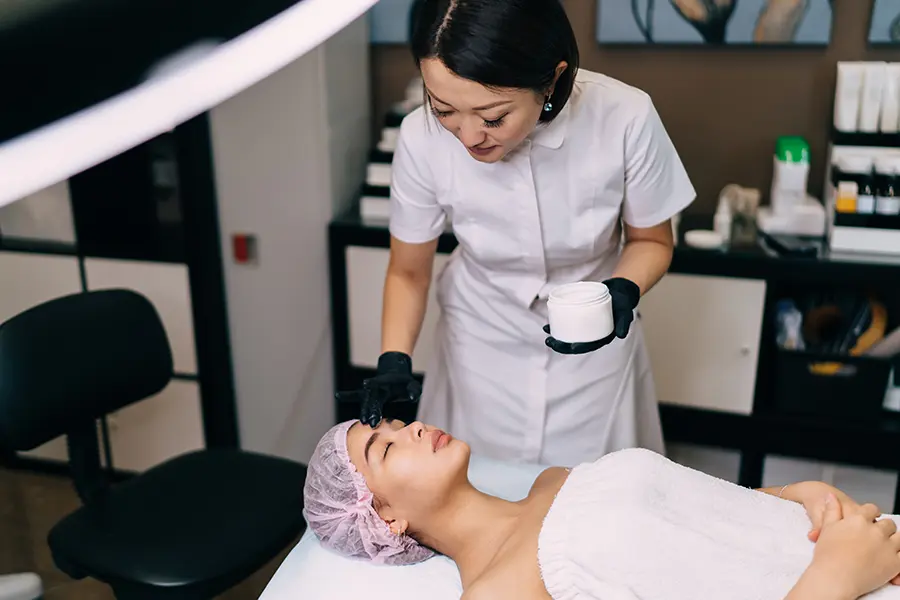
Table of Contents
We believe that all of you have experienced the acne scars, don’t you?
Acne scars can serve as lasting reminders of past battles with acne, impacting not only our physical appearance but also our self-confidence. Fortunately, advancements in dermatological technology have led to the development of effective treatments for acne scars.

What are acne scars?
Acne scars form when the skin’s healing process is disrupted following an acne breakout. The type of acne scar that develops depends on the severity of the inflammation and the depth of the acne lesion, including atrophic scars and hypertrophic scars (Healthline Media, 2023):
- Atrophic Scars (depressed acne scars): These appear as indented or sunken areas below the skin’s surface and are caused by the loss of collagen and elastin, the structural proteins that support the skin.
- Hypertrophic and Keloid Scars (raised acne scars): These scars are raised and thickened, often appearing as red or pink bumps on the skin’s surface. They result from excessive collagen production that extends beyond the original wound site during the healing process.
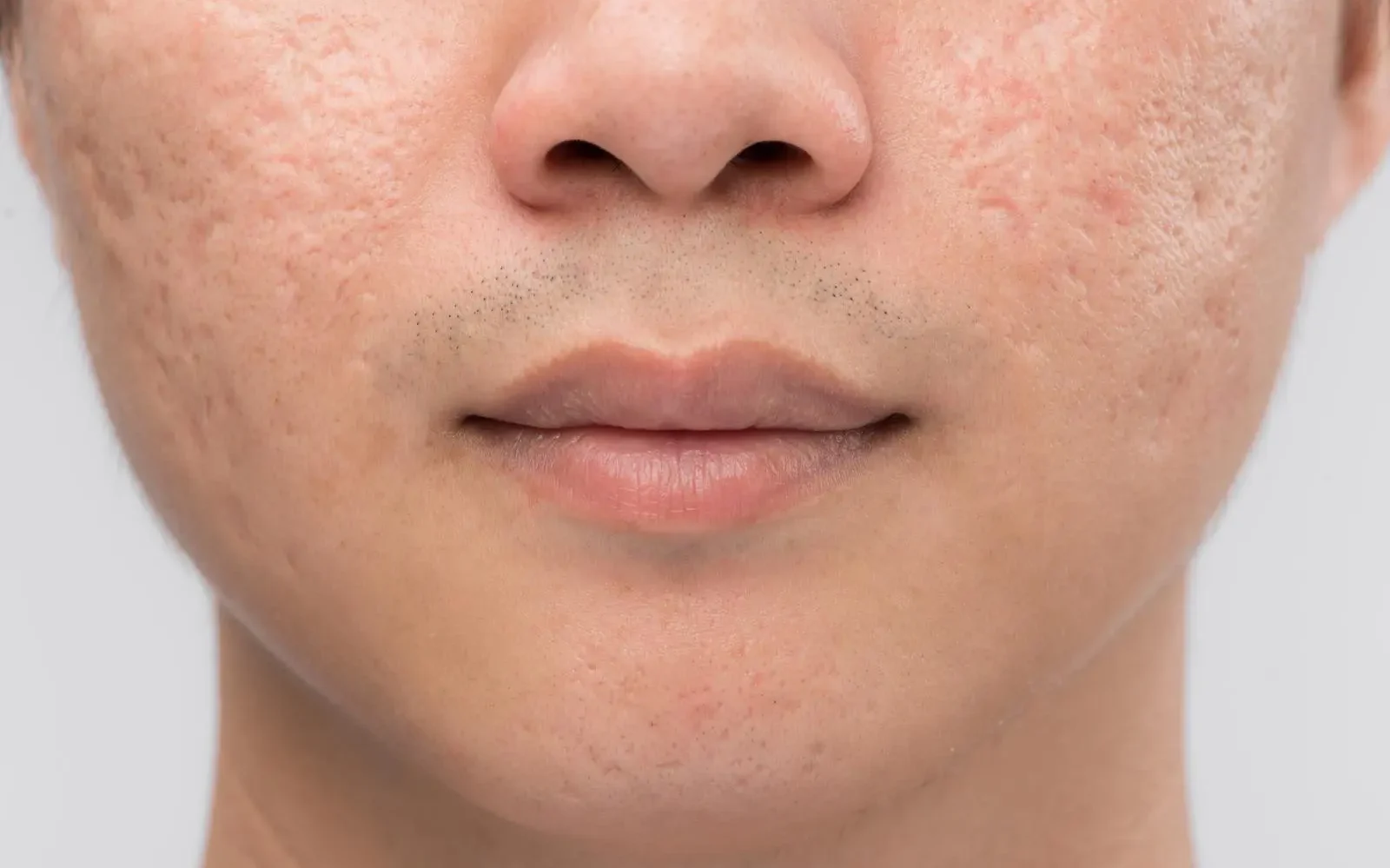

How to choose the right treatment?
You may wonder what to choose. The choice of treatment depends on the type and severity of the scars. According to Cleveland Clinic Staff (2023) and the American Academy of Dermatology (2023), here are some common treatment options:
Read more > Acne & Acne Scars
Topical Treatments:
Applied directly to the skin, these can help reduce inflammation and promote healing. They may contain ingredients such as erythromycin, clindamycin, sulfacetamide, retinoic acid, or vitamin C. Key benefits include:
- Improved Texture: Ingredients like retinoids promote skin cell turnover, leading to smoother and reduce the appearance of uneven surfaces caused by acne scarring.
- Reduced Hyperpigmentation: Components like vitamin C target hyperpigmentation, fading dark spots and discoloration associated with acne scars.

Microneedling:
This technique uses tiny needles to create small punctures in the skin, stimulating collagen production and improving the appearance of scars. It’s less invasive than laser resurfacing but may require multiple treatments. Key benefits include:
- Improve the texture and appearance: The micro-injuries trigger the body’s natural healing response, leading to increased collagen production which helps improve the texture and appearance of acne scars.
- Enhanced Absorption of Topical Treatments: Microneedling allows these products to penetrate deeper into the skin, maximizing their effectiveness in promoting skin repair and reducing the visibility of acne scars.
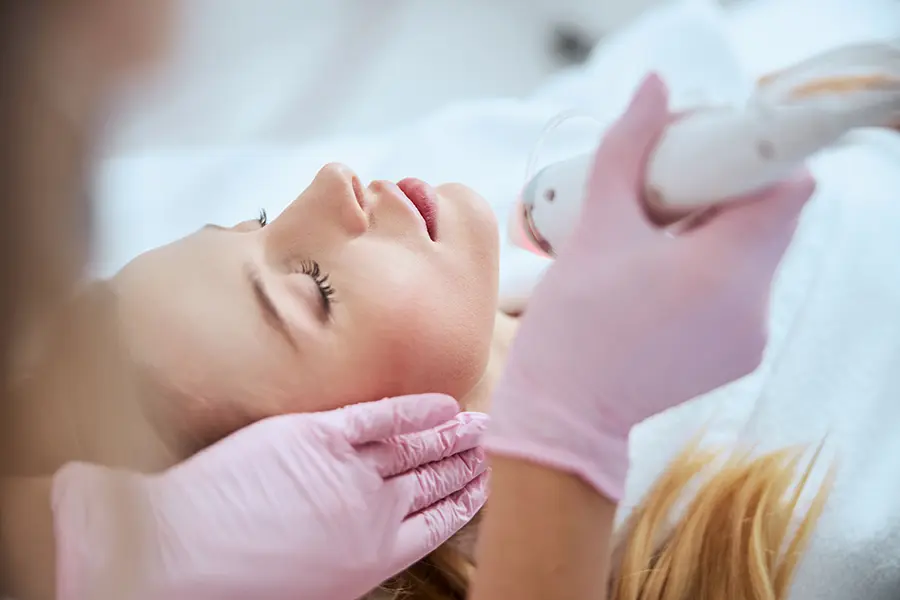
Chemical Peels:
These use acids to remove the top layer of skin, promoting the regeneration and improving the appearance of scars. However, they are an additional method rather than a regular therapy. Key benefits include:
- Exfoliation and Skin Renewal: It promotes exfoliation and encouraging the growth of new, healthier skin cells. This process helps improve the overall texture of the skin, reducing the appearance of acne scars.
- Stimulation of Collagen Production: Chemical peels can stimulate the production of collagen that helps to fill in depressed or atrophic acne scars, making them less noticeable.
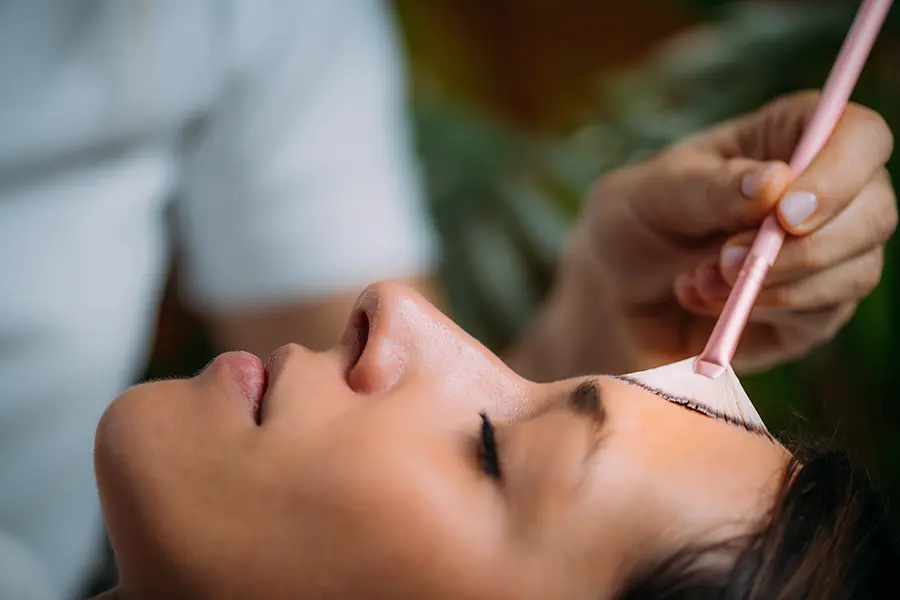
Fractional RF (eMatrix Sublative Rejuvenation):
It is one of nonablative laser resurfacing or light source which has emerged as a popular non-invasive treatment for acne scars. This technology utilizes radiofrequency energy delivered in a fractional pattern, creating micro-channels in the skin to stimulate collagen production and promote skin renewal, making your skin tighten (Laser & Skin, 2023). Key benefits include:
- Improved Skin Texture: Fractional RF addresses atrophic scars by promoting collagen remodeling, resulting in smoother skin texture.
- Minimal Downtime: With minimal discomfort and downtime, eMatrix is an attractive option for those seeking effective results without a prolonged recovery period.
Erbium Glass Fractional Laser:
This method is another nonablative laser (Mayo Clinic, n.d.). This laser emits wavelengths that are well-absorbed by water in the skin, causing controlled thermal injury to stimulate collagen production and promote healing. Key benefits include:
- Fine Line and Wrinkle Reduction: Beyond treating acne scars, this laser is effective for addressing fine lines and wrinkles.
- Shorter Recovery Time: Compared to more aggressive lasers like CO2, Erbium Glass Fractional Laser is associated with a shorter recovery time.
Individuals seeking a versatile treatment for both acne scars and signs of aging may find the Erbium Glass Fractional Laser to be a suitable option. You can consult the dermatologist if you are unsure.
CO2 Fractional Laser:
This method uses lasers to remove the top layer of skin (ablative laser). For individuals with more severe skin concerns, including deep acne scars and pronounced wrinkles, the CO2 Fractional Laser is an intensive option. This laser emits wavelengths that target water in the skin, leading to controlled thermal damage and collagen production. Key benefits include:
- Aggressive Treatment: CO2 lasers are known for their effectiveness in treating severe textural issues, deep wrinkles, and certain types of scars.
- Noticeable Results: While downtime is longer, the results are often more pronounced, making it a preferred choice for those seeking significant improvement.
PicoSure:
It is a picosecond laser technology designed to remove various skin concerns, including freckles, melasma, tattoo, acne scars, and pigmentation issues. It delivers ultra-short pulses of energy to the skin, breaking down pigment and stimulating collagen production. Key benefits include:
- Faster Treatment Sessions: PicoSure’s rapid pulses result in shorter treatment sessions compared to traditional lasers. It is non-invasive with no downtime.
- Broad Application: PicoSure can address both acne scars and unwanted pigmentation, offering a versatile solution for multiple skin concerns.
Individuals with a busy schedule seeking a versatile and efficient treatment may find PicoSure to be a suitable option for acne scar reduction.
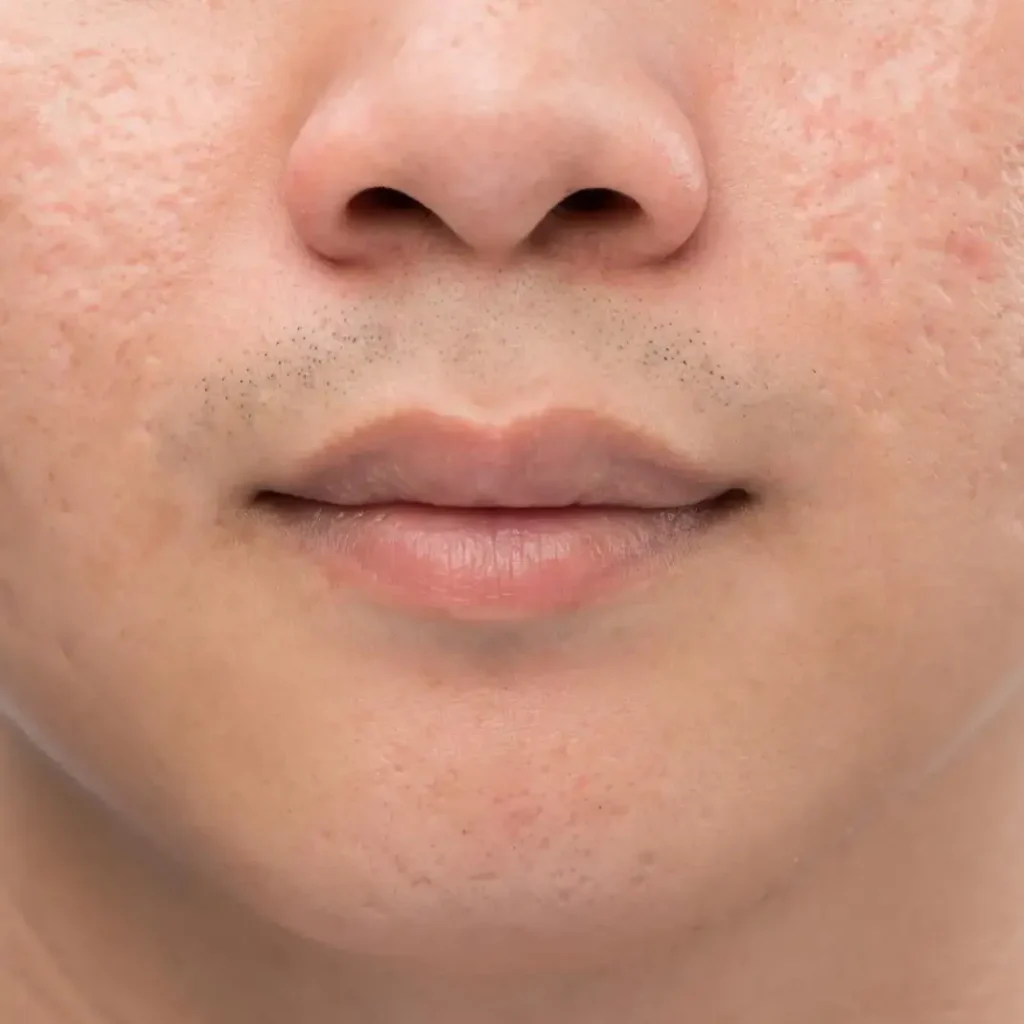
Conclusion
To achieve smoother, scar-free skin, the choice of treatment plays a pivotal role. The advanced treatments available to address acne scars include Topical treatments, microneedling, chemical peels, or laser resurfacing whether it is Fractional RF (eMatrix), Erbium Glass Fractional Laser, CO2 Fractional Laser, or PicoSure. All have unique benefits and suitable for different skin conditions.
New skin treatments are continually evolving to ensure that you make well-informed decisions on your path to a healthier, more radiant skin. When you consider these treatments, it’s crucial to consult with a reputable skin clinic to assess your individual skin type, concerns, and desired outcomes. They will recommend the most appropriate treatment options for you.
References
- American Academy of Dermatology. (2023, October 26). Acne scars: Diagnosis and treatment. Retrieved from https://www.aad.org/public/diseases/acne/derm-treat/scars
- Mayo Clinic. (n.d.). Laser resurfacing. Retrieved from https://www.mayoclinic.org/tests-procedures/laser-resurfacing/about/pac-20385114
- Healthline Media. (2023, April 17). How to Best Treat Acne Scars. Retrieved from https://www.healthline.com/health/acne-scars#depressed-scars
- Cleveland Clinic Staff. (2023, October 4). The best treatments to get rid of acne scars. Retrieved from https://my.clevelandclinic.org/services/scar-treatment
- Laser & Skin (2023, April 11). LASER TREATMENT FOR ACNE SCARS: IS IT ACTUALLY EFFECTIVE? Retrieved from https://www.laserskinsurgery.com/laser-treatment-for-acne-scars-is-it-actually-effective/
Related post > Ionto Treatment: Your Solution for Acne Scars and Skin Imperfections ! (Iontophoresis)
previos post > Unlocking Precision: The Power of Picosecond Laser

